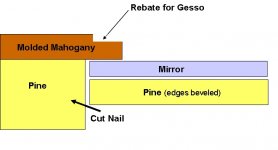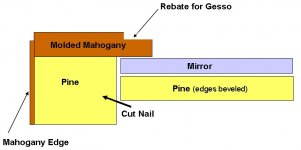Jeff Saylor
Well-known member
Hi All,
I'm in the latter stages of making a Queen Anne Bombe-Front dressing glass, Boston circa 1755 ( pic. from Magazine Antiques). My question is how were the silvered glasses commonly held in the frames? Were backs of thin wood usually glued up as a single piece or multiple pieces for controling expansion? Were they attached directly to the back of the frame or in the rabbet with retaining strips?
I'm in the latter stages of making a Queen Anne Bombe-Front dressing glass, Boston circa 1755 ( pic. from Magazine Antiques). My question is how were the silvered glasses commonly held in the frames? Were backs of thin wood usually glued up as a single piece or multiple pieces for controling expansion? Were they attached directly to the back of the frame or in the rabbet with retaining strips?


